Rose of Sharon Hibiscus 'Resi' (PBR)

ABOUT
Hibiscus 'Resi' is a stunning flowering plant that showcases bold and vibrant flowers. The blooms are large and eye-catching, with broad, overlapping petals that create a full and rounded shape. The flowers can come in a range of colors, typically featuring shades that may include bright pinks, deep reds, or rich purples. Many times, these flowers have a contrasting center, often a deep burgundy or a dark eye, that adds to their striking appearance. The foliage of Hibiscus 'Resi' is also quite lush, with leaves that are glossy and deep green, creating a beautiful contrast with the bright flowers. The leaves have a toothed or slightly serrated edge, giving them a textured look. The plant presents an attractive, bushy appearance, with multiple stems branching out and bearing both the alluring leaves and the showy flowers. In its overall form, Hibiscus 'Resi' carries a tropical appeal, evoking images of warm climates and sunny environments. It is popular in gardens and landscaping for the large, colorful blooms it produces, which can add a dramatic flair to any setting they are in. The plant generally has a good branching structure that allows the flowers to be displayed prominently, ensuring that they catch the eye of any onlooker.
About this plant
 Names
NamesFamily
Malvaceae
Synonyms
Rose Mallow, Hardy Hibiscus, Swamp Hibiscus, Rose Of Sharon
Common names
Hibiscus 'Resi' (PBR)
 Toxicity
ToxicityTo humans
The Hibiscus plant is generally considered non-toxic to humans. Ingesting parts of the plant typically does not lead to poisoning or severe adverse effects. Hibiscus flowers are even used in teas and edible products. However, sensitivity to the plant can vary, and it is always advisable to exercise caution and avoid eating plants not specifically grown for consumption.
To pets
The Hibiscus plant is also generally considered non-toxic to pets. While it may cause some mild gastrointestinal upset if ingested in large quantities, such as vomiting or diarrhea, it is not known to be seriously poisonous to animals like cats and dogs. Nonetheless, it is best to prevent pets from consuming plants, as individual reactions can vary.
 Characteristics
CharacteristicsLife cycle
Perennials
Foliage type
Deciduous
Color of leaves
Green
Flower color
Red
Height
3 feet (91 cm)
Spread
2 feet (61 cm)
Plant type
Shrub
Hardiness zones
5
Native area
Asia
Benefits
 General Benefits
General Benefits- Attractive Flowers: Featuring large, colorful blooms that can enhance the visual appeal of any garden or landscape.
- Easy to Grow: Generally easy to care for and can thrive in a variety of soil types and conditions.
- Drought Tolerance: Capable of surviving periods of low water once established, making it suitable for xeriscaping.
- Long Blooming Season: Offers a prolonged display of flowers, typically from late spring to autumn.
- Pest Resistance: Often resistant to a variety of common garden pests, reducing the need for chemical treatments.
- Wildlife Attraction: Attracts bees, butterflies, and hummingbirds, promoting pollinator activity in the garden.
- Privacy and Screening: Can be used to create natural screens or hedges for increased privacy in garden spaces.
- Cultural Significance: Holds meaning and valued in various cultures, adding a layer of cultural or emotional significance to the garden.
- Variety of Uses: Suitable for use in mixed borders, as a specimen plant, or container plant, offering versatility in garden design.
 Medical Properties
Medical PropertiesThis plant is not used for medical purposes.
 Air-purifying Qualities
Air-purifying QualitiesThis plant is not specifically known for air purifying qualities.
 Other Uses
Other Uses- Hibiscus 'Resi' petals can be used as a natural dye for fabrics and foods, imparting a vibrant pink or purple color depending on the pH.
- The leaves can be used in the creation of eco-friendly packaging materials as they are biodegradable and have a sturdy structure.
- Dried hibiscus flowers serve as an attractive component in potpourri mixes, adding color and a mild fragrance to the blend.
- The stems of the hibiscus plant can be woven into garden twine or ropes due to their fibrous nature.
- Hibiscus 'Resi' flowers are edible and can be candied for a decorative and unique garnish on desserts and cakes.
- Pressed hibiscus flowers can be utilized in botanical art and craft projects such as making bookmarks, cards or framed art pieces.
- The mucilaginous properties of hibiscus leaves are sometimes used in hair conditioning treatments to smooth and detangle hair.
- Petals of the Hibiscus 'Resi' can be used in making natural floral water or hydrosols for cosmetic use, such as facial toners.
- The blooms, when dried, can also be used as a colorful, natural stuffing material for scented pillows or sachets.
- Hibiscus wood, being quite robust, could be used in small-scale woodcrafts, like making handles for tools or for ornamental woodturning projects.
Interesting Facts
 Feng Shui
Feng ShuiThe Hibiscus is not used in Feng Shui practice.
 Zodiac Sign Compitability
Zodiac Sign CompitabilityThe Hibiscus is not used in astrology practice.
 Plant Symbolism
Plant Symbolism- Delicate Beauty: The hibiscus is widely recognized for its large, showy flowers, symbolizing delicate beauty and an appreciation for the fine and lovely.
- Femininity: With its soft, open petals, the hibiscus is often associated with femininity and the beauty of women.
- Warmth and Hospitality: In some cultures, the hibiscus represents warmth, friendliness, and a welcoming feeling, making it a common symbol for guests and gatherings.
- Tropical Charm: Native to tropical regions, the hibiscus is symbolic of relaxation, vacation, and the laid-back lifestyle often found in tropical climates.
- Carpe Diem: Due to its short-lived blooms, the hibiscus symbolizes living in the moment and enjoying life's fleeting pleasures.
- Wealth: Some cultures view the hibiscus as a symbol of wealth, prosperity, and success.
- Famous Love: In South Korea, the hibiscus, or "mugunghwa," is a national emblem representing the enduring nature of love and the country's cultural legacy.
 Water
WaterThe hardy hibiscus, as Hibiscus 'Resi' is commonly known, prefers consistent moisture, so aim to water when the top inch of soil feels dry to the touch. This typically amounts to watering once or twice a week, but this schedule can vary based on temperature and climate conditions. During hot, dry spells, the plant may need water more frequently. Apply water directly to the soil, avoiding wetting the foliage to prevent disease. An average watering might require about 1-2 gallons, depending on the size of the plant and the environmental conditions.
 Light
LightHardy hibiscus thrives in full sun to part shade. The ideal spot for it is one where it can receive at least 6 to 8 hours of direct sunlight per day. Too little light can result in fewer blooms and a less robust plant. Avoid deep shade as it compromises the plant’s blooming potential and overall vigor.
 Temperature
TemperatureHardy hibiscus plants can tolerate a wide range of temperatures, but they perform best when the temperature is between 60°F and 90°F. They can survive dips down to about 20°F but ideally should not be exposed to temperatures below freezing for prolonged periods. To protect the plant and ensure strong growth, aim to keep it within this temperate range as much as possible.
 Pruning
PruningPrune your hardy hibiscus to encourage bushier growth, remove dead wood, and maintain an attractive shape. The best time for pruning is in late winter or early spring, just as new growth begins. Cut back about a third of the older stems to stimulate fresh growth and more blooms. Pruning should be done annually or as needed to remove any damaged or diseased branches.
 Cleaning
CleaningAs needed
 Soil
SoilThe best soil mix for Hibiscus 'Resi', commonly known as Tropical Hibiscus, should be well-draining and rich in organic matter; a mix of loam, peat, and perlite or sand works well. Aim for a slightly acidic to neutral pH, between 6.0 and 7.0.
 Repotting
RepottingTropical Hibiscus should be repotted every 1-2 years or when it outgrows its current pot, to replenish nutrients and allow for continued growth.
 Humidity & Misting
Humidity & MistingTropical Hibiscus flourishes in high humidity conditions, ideally between 50-60%, to replicate its native tropical environment.
 Suitable locations
Suitable locationsIndoor
Place in bright, indirect light and keep soil moist.
Outdoor
Plant in full sun with shelter from strong winds.
Hardiness zone
9-11 USDA
 Life cycle
Life cycleHibiscus 'Resi', commonly known as Rose of Sharon, starts as a seed that germinates in warm, moist soil, typically in spring or early summer. The seedling emerges and establishes a root system, followed by the development of foliage. As the plant grows, it enters a vegetative stage characterized by the production of lush, green leaves. Once mature enough, usually in late spring or summer, it begins the flowering stage, during which the characteristic large and colorful blooms appear. After pollination, often by insects or birds, the flowers give way to seed pods that mature, dry, and eventually release seeds, completing the reproductive cycle. The plant may enter a period of dormancy during colder months, particularly in temperate regions.
 Propogation
PropogationPropogation time
Spring-Early Summer
Hibiscus 'Resi', often referred to simply as hibiscus, can be propagated effectively through softwood cuttings. This is a popular method because it allows gardeners to create clones of a parent plant, ensuring the offspring have the same desirable characteristics. Softwood cuttings are best taken during late spring or early summer when the plant's new growth is still tender and flexible. To propagate hibiscus 'Resi', a gardener would typically cut a 4 to 6 inch length (about 10 to 15 cm) from the tip of a healthy, non-flowering branch, strip the leaves from the lower half of the cutting, and dip the cut end into a rooting hormone powder or gel to encourage root development. After the hormone application, the cutting is planted in a well-draining soil mixture and kept moist. With appropriate warmth and humidity, the cutting generally develops roots within a few weeks, after which it can eventually be transplanted into the garden or a larger pot for further growth.
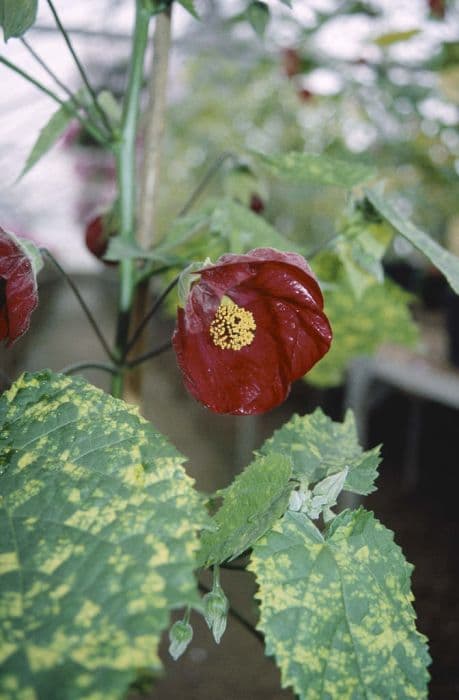
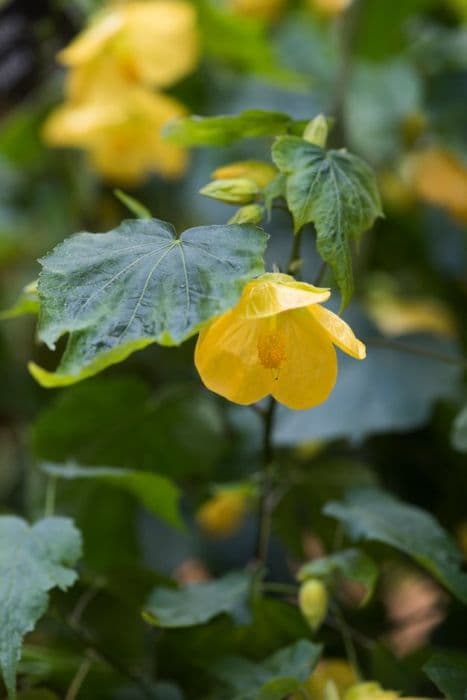
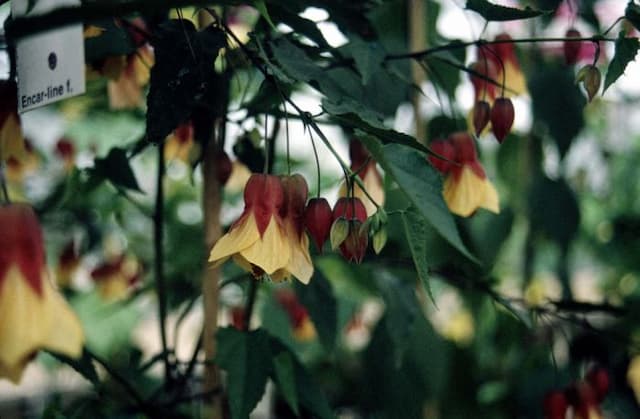
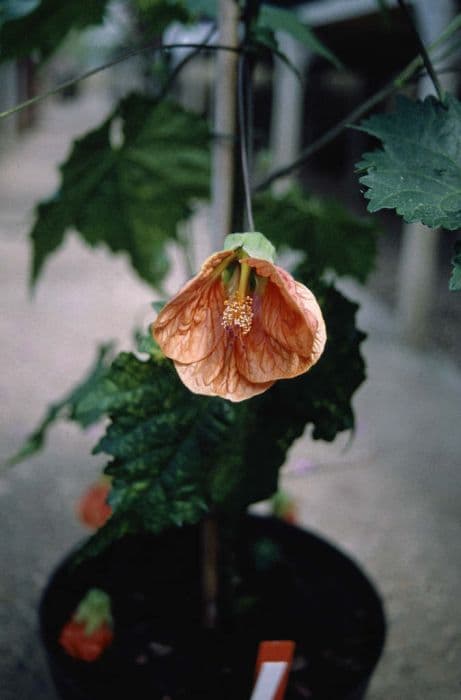
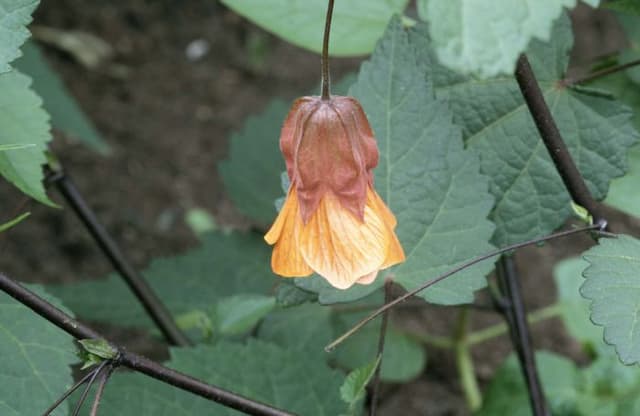

![Abutilon [Yellow Trumpet]](/_next/image?url=https%3A%2F%2Fplants-admin.emdemapps.com%2Fimages%2Fplants%2F%2Fimages%2F604b5caa8b4fb.png&w=640&q=75)

